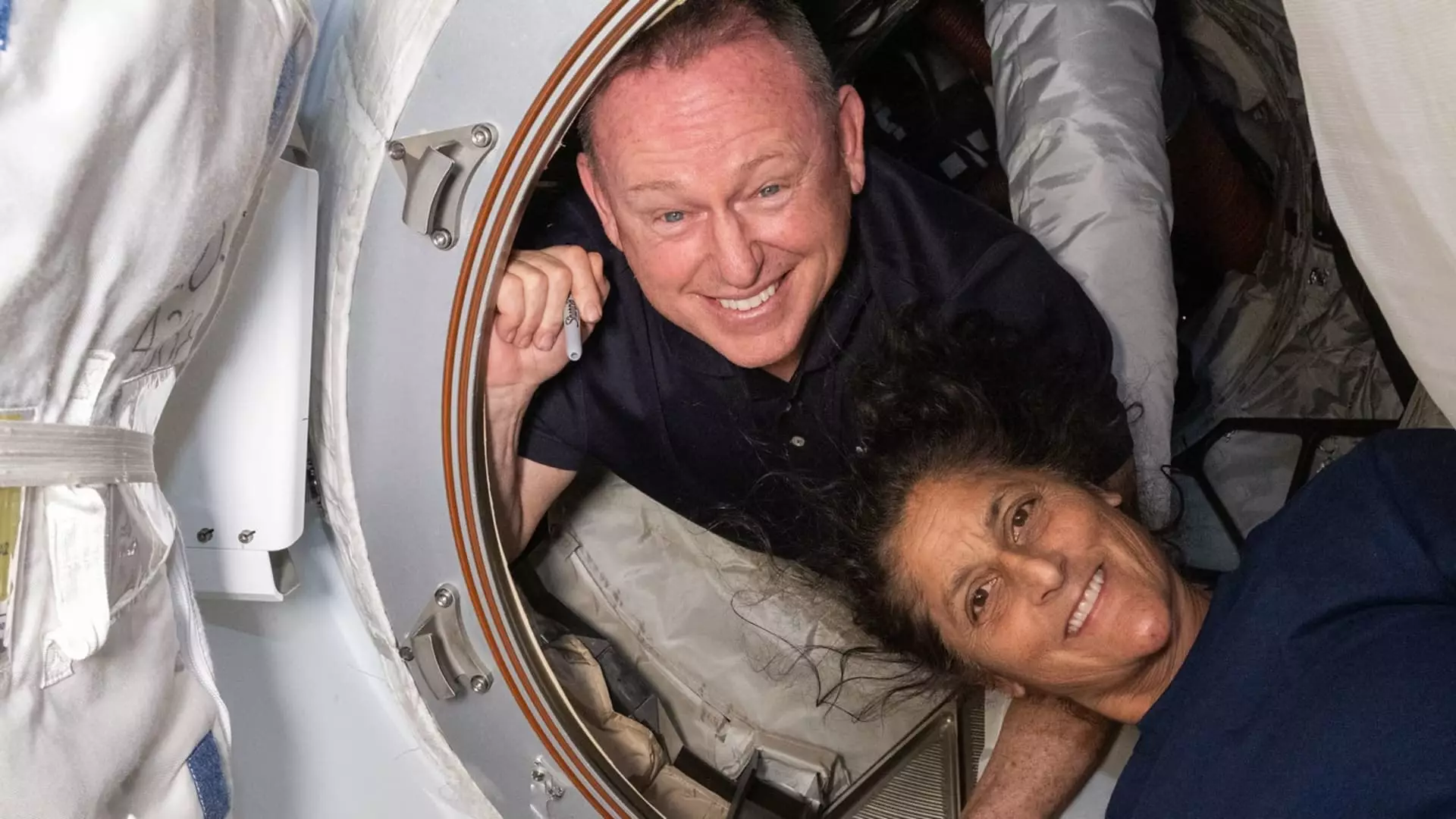It’s not often that human ingenuity intertwines with sheer folly in the unforgiving realm of space travel, yet that’s precisely what transpired with the prolonged stay of NASA astronauts Butch Wilmore and Suni Williams aboard the International Space Station (ISS). Launched with the intention of a swift nine-day mission, they ultimately found themselves adrift in the procedural quagmire that accompanies flight testing gone awry. Their mission, initially shrouded in optimism, spiraled into a scenario marred by complications surrounding Boeing’s Starliner capsule, aptly named “Calypso.” This unexpected saga raises serious questions about accountability and the efficacy of private-public partnerships in aeronautics.
What was touted as a crucial flight test turned into an elaborate circus when technical malfunctions scrambled the astronaut rotation—an intricate dance of scheduling and logistics that served as yet another reminder of the vulnerabilities inherent in aerospace technology. The failure of Starliner’s thrusters during the docking procedure not only put Wilmore and Williams in an unanticipated holding pattern but also shed light on Boeing’s staggering miscalculations, leading to over $2 billion in losses. This raises an uncomfortable question: How long can we continue to invest in a flawed system before we demand better accountability?
Redefining Readiness: The SpaceX Alternative
While Boeing’s shortcomings paint a disheartening picture, NASA’s pivot to utilize SpaceX’s Dragon spacecraft offers a glimmer of hope—albeit with a twinge of irony. After months of being marooned in orbit, these seasoned astronauts will return not in the craft designed to revolutionize crewed spaceflight but rather in one associated with a competitor that has proven its mettle time and again. This shift not only underscores the fragility of Boeing’s Starliner program but also places immense pressure on SpaceX to deliver swiftly and reliably, lest their reputation begin to erode amid the unpredictability of space travel.
The contrived notion of competing space companies may seem beneficial in theory; however, the practical implications reveal a stark reality that the race for dominance in low Earth orbit can yield unanticipated consequences. The need to adjust astronaut rotations and reschedule launches to accommodate this bureaucratic mess is a glaring sign that, for all of NASA’s ambitions, these private entities must prioritize reliability over perpetually chasing the next shiny achievement.
The Political Undertones: Stranded or Not?
As the narrative unfolded, it quickly became evident that the situation wasn’t merely a technical malfunction; it was steeped in political undertones. The controversy took a notably contentious turn when former President Donald Trump took to social media, casting accusations without evidence that the two astronauts were “stranded” as pawns in a political chess game. This reckless rhetoric undermined the professionalism and dedication of everyone involved in the mission, reducing it to a mere talking point rather than honoring the heroics of space exploration.
The dichotomy of perceptions—between those who see astronauts like Wilmore and Williams as heroes on a scientific odyssey and those who reduce their humanity to pawns in a political drama—underscores an alarming trend in contemporary American discourse. Instead of fostering admiration for those daring to explore the cosmos, we find ourselves entrapped in a whirlpool of skepticism and division, each side wielding space travel as a weapon to critique the other.
Looking Forward: The Personal Lives Behind the Space Suits
Despite the myriad challenges and extended separation from family and earthly concerns, both astronauts have worked diligently to maintain their focus on scientific endeavors. Their tasks aboard the ISS were filled with routine maintenance and research initiatives—normalcy in an otherwise chaotic scenario. Williams’s statement that they did not feel “abandoned” reflects a commendable resilience, yet it can’t help but elicit a profound sense of empathy as they long for the simplicity of being home with loved ones.
The notion of astronauts living in the space-time parallel of routine work and the longing for personal connections offers a humbling portrait of the human experience. As they prepared for their descent back to Earth aboard a SpaceX capsule, it begs the question: How do we navigate the balancing act between the excitement of exploration and the fundamental human need for connection?
With these reflections, we are left to ponder not just the technological implications of this mission but also the profound human stories that emerge from the challenges of space exploration—stories that warrant much more than political rhetoric or corporate rivalry.


Leave a Reply